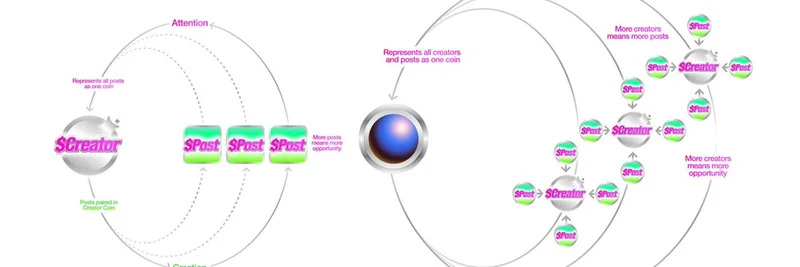Hey there, meme enthusiasts and blockchain buffs! If you've been keeping an eye on the evolving world of meme tokens, you might have stumbled upon a fascinating thread on X (formerly Twitter) that's buzzing about Zora. Posted by @ceterispar1bus, head of research at Delphi, this tweet highlights what they call "the only deep dive on @zora you need" by researcher @yeak__. It's a candid breakdown of Zora's tokenomics, drawing from past protocols, market opportunities, and both the upsides and downsides. And guess what? There's a link to 15 free reads of the full Delphi Digital report. Let's unpack this and see why it's got the crypto community talking.
First off, if you're new to Zora, think of it as a platform that's all about "coining" – turning content, creators, and ideas into tradable tokens. It's built around creator coins and content coins, which are essentially meme tokens tied to individuals or specific posts. The magic lies in its flywheel model, a term thrown around a lot in crypto but rarely executed well. According to the thread, Zora's setup is simple yet powerful: a 3% fee on every trade, split evenly – 1% to the creator, 1% to Zora, and 1% to liquidity providers (LPs).
Breaking Down the Flywheel
Every asset on Zora is paired, directly or indirectly, with the $ZORA token. Content coins link to creator coins, which in turn pair with $ZORA. This creates two key value drivers: fees and sinks. As the base pair, $ZORA benefits from buybacks – half of the LP fee (0.5% per trade) effectively buys $ZORA to bolster liquidity. Overall, 2.5% of each trade generates buy pressure on $ZORA since rewards to Zora and creators are paid in $ZORA too.
What makes this robust? The thread compares it to Virtuals, a past protocol that inspired Zora but faltered. Virtuals had a strong flywheel at launch, relying on bonding curves for new agents (think AI or virtual entities). But as tokens matured, liquidity fragmented – moving to Uniswap v3 or pairs like USDC, weakening the token sink.
Zora fixes this by routing all volume through official, canonical pools. No fragmentation means the sink persists throughout a coin's lifecycle, keeping the flywheel spinning with ongoing trading volume.
Is the 3% Fee Sustainable?
Skeptics might balk at the 3% fee, calling it too high. But the thread points out precedents: NFT markets handled $5B monthly volume with ~10% fees at their peak. Even Solana's "trenches" – its meme coin ecosystem – effectively hit 3% all-in fees through pool fees, app charges, MEV, and sniping losses.
In its bear case, Zora is just a polished version of these trenches: better tokenomics, distribution, and branding. It surfaces hidden costs and recycles value within the ecosystem. The key metric to watch? Trading volume of Zora coins – that's what'll fuel the flywheel.
Upsides and Downsides: Keeping It Real
The deep dive doesn't shy away from honesty. Upsides include persistent value accrual to $ZORA, aligned incentives for creators and traders, and lessons learned from failures like Virtuals' liquidity issues. It's funny and brutally frank at times, admitting crypto's overuse of "flywheel" but arguing Zora earns it.
On the flip side, high fees could deter volume if not offset by superior liquidity and user experience. There's also the risk of market saturation or regulatory hurdles in the meme token space. But overall, it's positioned as a step up, potentially capturing the chaotic energy of meme trading with smarter economics.
If this piques your interest, check out the full report for more laughs and insights: Zora Can't Stop Coining. And don't forget the original thread on X for community reactions: View the tweet.
In the fast-paced world of meme tokens, Zora might just be the protocol that keeps the party going sustainably. What do you think – ready to coin your next big idea? Stay tuned to Meme Insider for more updates on emerging tokenomics and blockchain trends!




